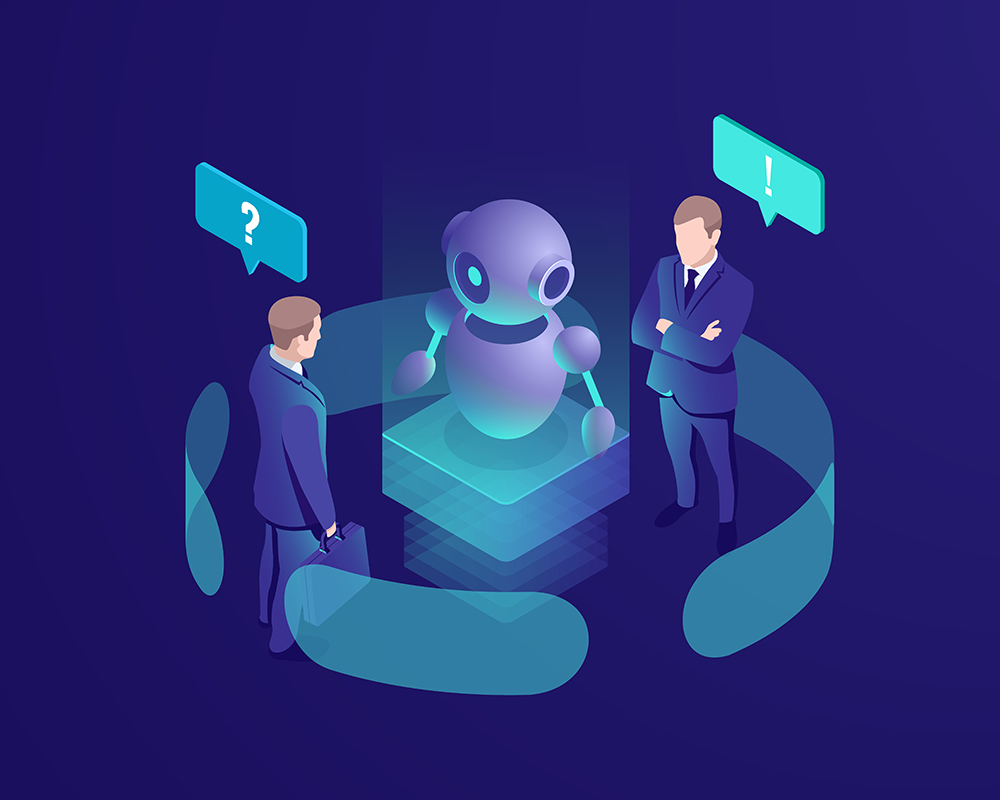July 22, 2020 By: Abhishek Chaudhary
A version of this Blog was first published on the Dataquest
The e-commerce industry has rapidly expanded its presence in India in the past 5 years. The growing demand has triggered an uninterrupted need for round-the-clock service. Meeting this demand, especially in such challenging times of pandemic becomes the need of the hour, which eventually leads e-commerce players to search for alternatives to serve the ever-growing volume of customers, this is where automation comes to the rescue.
Chatbots can help to amplify customer-centric practices while changing the traditional forums for customer engagement which had its limitations. Automation using Chatbots, powered by artificial intelligence (AI) and machine learning (ML), can be a great influence on enhancing the potential pace of customer experience (CX). A well-integrated Chatbot can make the customer experience so seamless, that it gets difficult to differentiate whether one is interacting with a machine (Chatbot) or a human.
The AI-powered conversational Chatbot can be a true future for the expanding e-commerce industry, in comparison to a regular Chatbot. It can transform the process of customer interaction, where the customer no longer has to deal with the limited options provided by a primitive Chatbot. The devices like Alexa and Google Assistant have now become common items of day-to-day life, as people are now much more comfortable conversing with conversational AI engines.
The e-commerce industry involves instant customer support, or it may lead to losing the business. Today, customers want immediate support to their problems and queries. A conversational AI Chatbot can seamlessly answer any customer query 24*7 in an instant.
In fact, it has the ability to answer repeated queries of customers related to products and services on a real-time basis; answering to almost 80% of repeated customer queries. And, if the Chatbot fails to answer any query, they can directly transfer the query to a live-chat customer-support agent.
Essentially, a large part of the e-commerce operations depends upon the traditional customer support function which is cumbersome and involves lengthy processes. In addition, during these trying times, it is difficult for most e-Commerce establishments to keep the customer support system function seamlessly.
By putting across instant responses in two-way communication, Chatbots can establish an excellent personalized experience for the users as an effective and time-saving measure.
A pre-requisite feature in every e-commerce website is customer reviews and FAQ sections which are designed to help the customer with any trouble a customer might face while making a purchase.
A shopper can enjoy the following benefits with the help of a Chatbot:
- Increased efficiency in terms of speed.
- Personalized experience.
- Offers and recommendations on the basis the user’s needs.
- Convenience for the customer.
- Shopping related advice and recommendations.
- Technical assistance and real-time response 24*7.
- Safe payment options.
- Omnichannel presence.
Other than proving to be beneficial for shoppers, Chatbots offer an array of benefits for the e-commerce providers as well:
- Cross-sell and upsell opportunities.
- Fostering buyer loyalty.
- A platform to promote online reviews.
- Improved customer experience.
- Automated processes using artificial intelligence.
- Immediate feedback.
- Behavioral analysis of the users.
The e-commerce industry relies on providing customers a delightful experience that is unmatched. But, working on the traditional customer support system cannot provide a seamless experience due to its limitations, leading to an average level of customer satisfaction.
Good customer experience is the key to good reviews, which ultimately leads to customers’ retention. It is important to understand if a customer is satisfied with the services or not and for the same conversational Chatbots can be hands-on.
Other than mere business aspects, customer feedback is also necessary for improving Chatbot functionality in terms of conversational flow, design, responses and any prevalent knowledge gap.



